Shahi chicken korma is a rich and flavourful curry. It’s a dish invented for nobility. Spice, coconut, almond, cream and a hint of sugar come together in a sumptuous curry worthy of any celebration.
Chicken korma can be a great dish. If it’s done right. This is a dish that has been around forever. Traces back to the 16th century. Legend says it was served at the inauguration of the Taj Mahal. That’s a pretty big deal.
Chicken korma can have real flavour
Traditionally, it can run from mildly spiced to fiery hot. That’s right. Fiery hot. But something happened. Something I don’t think was good. Korma went from great to bland. Lost along the way. I’ve even seen recipes with bananas in it. Bananas???
This is royal food. Mughlai nobility to be precise. They weren’t chili heads. Ate pretty simply really.
Imagine what they would think if they tasted the cloyingly sweet, flavourless versions served today. Not impressed I bet. Not at all. Korma used to be party food. Now it’s baby’s first curry.
It doesn’t have to be that way. There’s no rule that says it needs to be bland. Or sweet. In fact the Mughlai version is well spiced. No sugar. But that version is a lot of work.
This chicken korma strikes a balance
Somewhere in the middle though. That is special. That’s what this shahi chicken korma is all about. Not a ton of work. Not bland. Real flavour.
A bit spicy. Rich. Not so hard to make. If you’ve made any of the restaurant curries on this blog this one is no different really.
Look at the pictures. This isn’t some yellow chicken korma loaded with sugar and cream. It’s red. If you are looking for creamy, bland and cloyingly sweet this isn’t it. Consider yourself warned.
Restaurant style curries mean restaurant style prep
This is how they make curries in restaurants. It goes fast. Prep everything. Be ready. Have all your ingredients measured out before you turn on the heat.
Restaurant style cooking is different from homestyle. It relies on high heat and curry base. This isn’t the slow braise you are used to. If you don’t know what I’m talking about read this primer to restaurant style cooking. There’s even a video. It will help.
I could see this on a restaurant menu. Two versions. Chicken korma – curry for your kids. Shahi chicken korma – curry for you.
shahi chicken korma
Ingredients
The spice mix
- 1 1/2 tsp indian restaurant spice mix - recipe link below
- 2 tsp kashmiri chili powder or 1/2 tsp cayenne mixed with 1 1/2 tsp paprika
- 1/4 tsp turmeric
- 1/2 tsp kosher salt
The curry ingredients
- 3 Tbsp oil
- 1 3 inch piece of cinnamon stick - cassia bark
- 2 green cardamom pods
- 2 tsp garlic/ginger paste - recipe link below
- 15 oz curry base
- 3 Tbsp coconut milk powder - Maggi brand is pretty readily available
- 1 Tbsp almond flour
- 10-12 oz pre-cooked chicken - this works with pre-cooked lamb as well
- 1 1/2 tsp sugar - more to taste if you like it sweet
- 2 Tbsp heavy cream - 35% (optional)
Instructions
- Make the spice mix.
- Combine and mix the coconut milk powder and almond flour with enough water to form a thin paste.
- Heat your frying pan (don't use non-stick) briefly over medium heat. Add the oil.
- When the oil starts to shimmer add the cinnamon and cardamom and cook until they start to crackle.
- Now add garlic ginger paste and cook, stirring constantly, until it stops sputtering.
- Turn down the heat and add the spice mix. This is the critical step. Stir it constantly for 30 seconds. If it starts to darken lift the pan off the heat. You want the spice mix to cook in the oil but not burn.
- Turn the heat up to medium high. This is also really important. The heat is what caramelizes the onion in the curry base and gives the curry it's Indian restaurant flavour. As you become more comfortable with this technique try pushing it.
- Add 3 oz of curry base. Stir until bubbles form (little craters really), around 30 seconds. Think lively boil. Watch the edges of the pan. The curry can stick here. Sticking is OK. Just scrape it back into the base. Burning is bad.
- Now add 6 oz of curry base and stir briefly. Let it cook until the bubbles form again. This takes 1-2 minutes.
- Add the rest of the curry base and let cook until the bubbles form.
- Stir in the coconut/almond paste.
- Turn the heat down to low and add the pre-cooked chicken.
- Let the curry simmer for about 5 minutes. If it gets too thick add a bit more curry base. Don't add water.
- Add the sugar. Taste and decide if you want it sweeter. Creep up on it. You can add sugar. You cannot take it away.
- Add heavy cream to taste. None is a really good curry. 2 Tbsp is a creamy, kingly version. Decide what you are in the mood for. The cream does dull the flavours but it adds richness and tempers the heat.
- Garnish with a bit of chopped fresh saffron if desired and serve with rice or Indian flatbread.
Notes
Nutrition

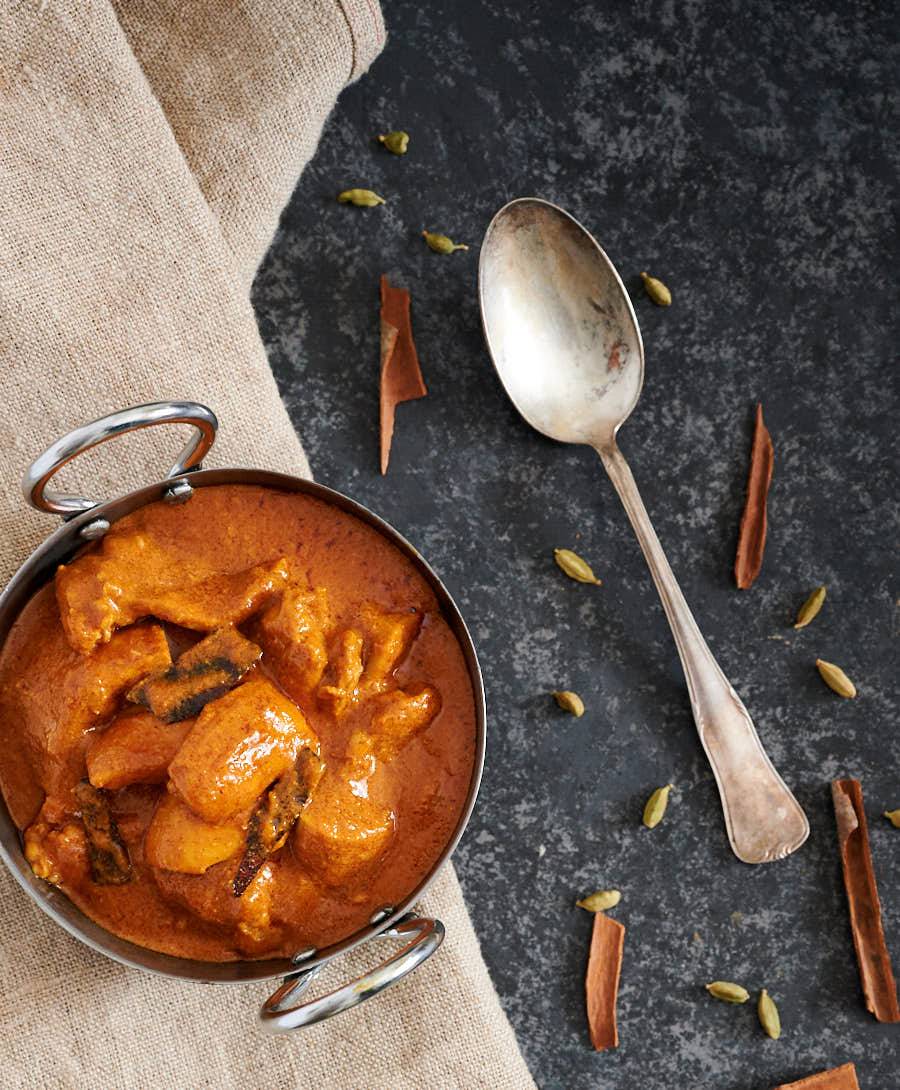
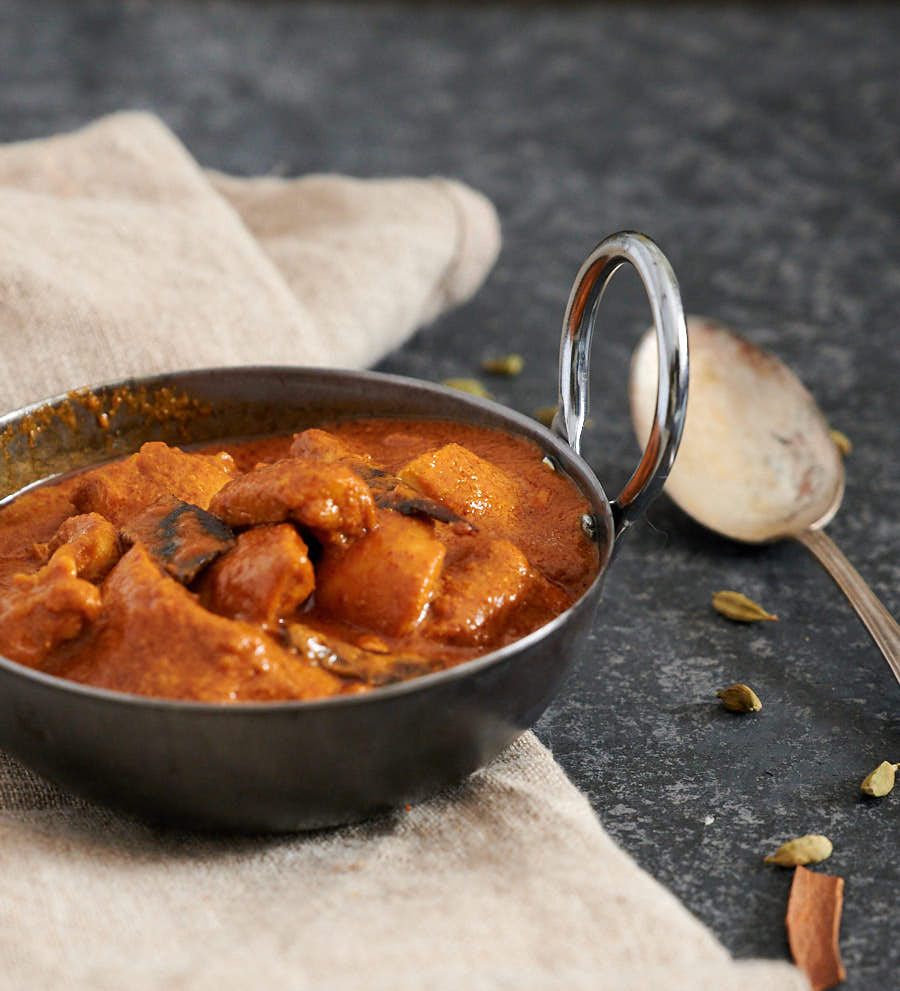
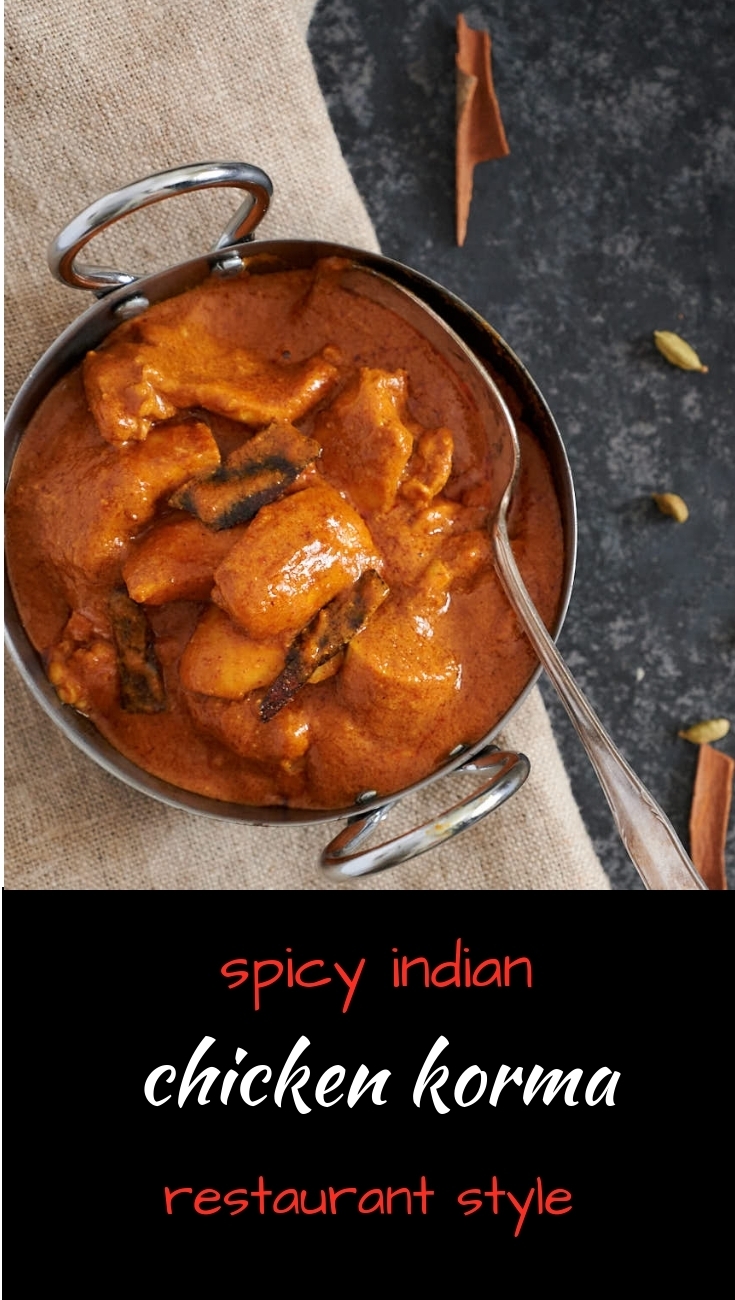
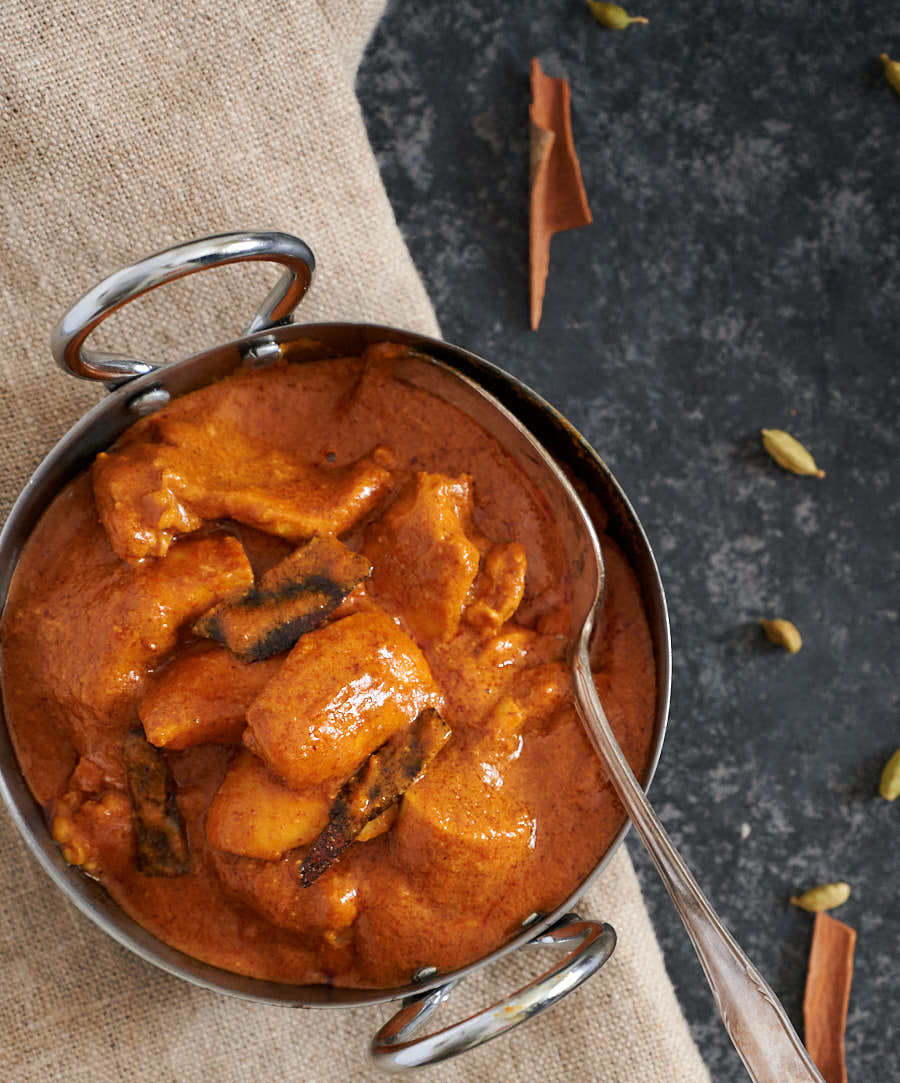
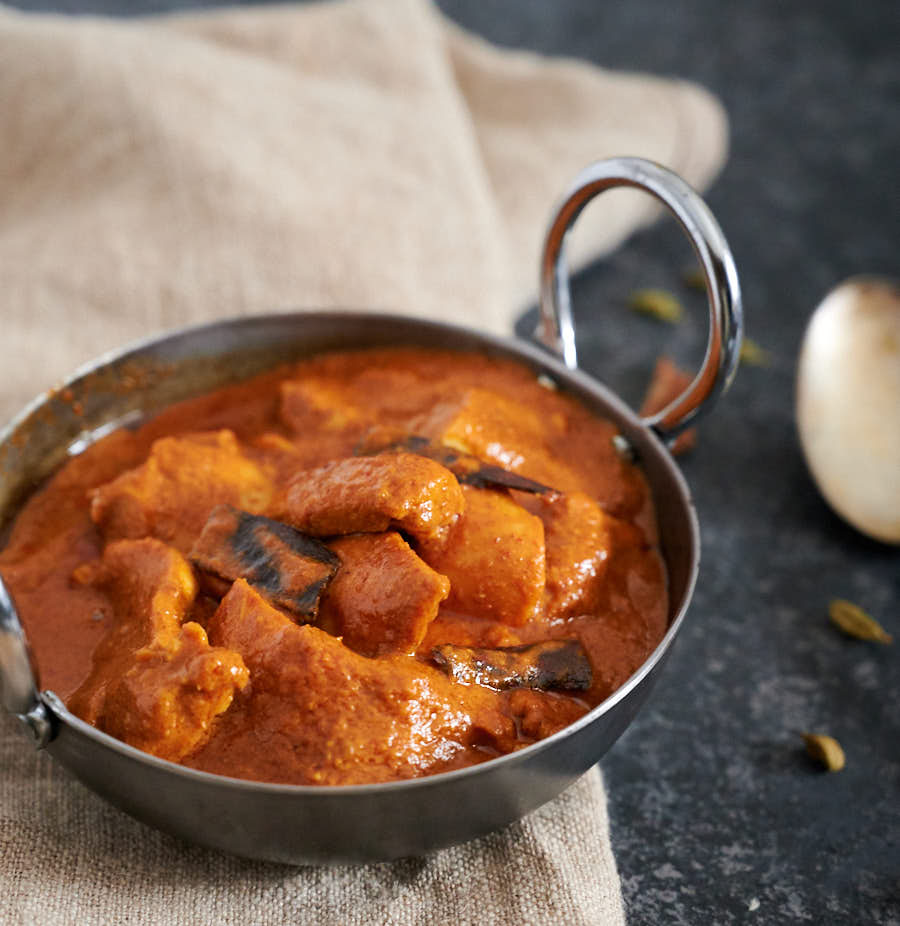
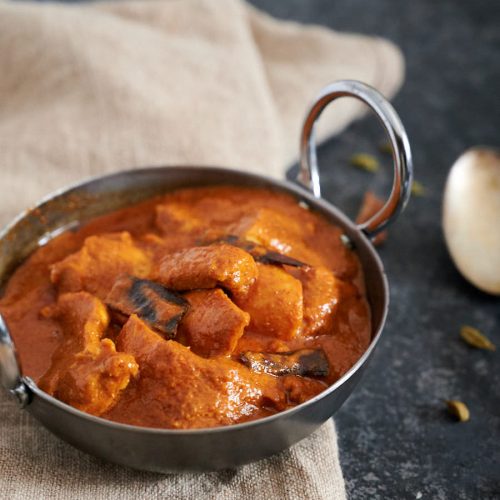
Hi Romain
made this last week and it was great.. only comment was it was consistency was a bit floury…so i need to understand what i did wrong… any tips appreciated… making tomorrow again.
cheers
Tony
I can think of two things. Sometimes, if my coconut milk powder is getting old it doesn’t dissolve really well. I’d call that more gritty than floury though. That leaves the almond flour. I use Bob’s Red Mill super fine almond flour. It is 100 percent almonds that are “stone ground” if the packaging is to be believed.
thanks Romain…. gritty that’s the right word… will look for Bob’s Red Mill.
tried many of your recipes over the months now – entertained many times serving different dishes and the compliments have been great…. so just want to say thanks for sharing totally appreciated!!
I’m wanting to make this for my 7 and 4 1/2 year old.
Would leaving out the chilli be better for them as I don’t think they will eat anything spicy?
Thanks
Maybe swap the kashmiri chili powder out for paprika? So you get the colour and a little bit of flavour.
Hi Romain.
This could be a much better option for me having been so far less than impressed in the BIR Korma I’ve tried so far. The Korma I like is not at all sugary sweet and certainly not bland. I’ll be giving your recipe a try. Do you know anything about “White Korma”? I once had one that was delicious but have been unable to get even close.
Cheers from Oz
Greg
Nice to see you here Greg.
If I was unsubtle (I know I wasn’t) I am not a fan of what passes for korma in the UK these days. This recipe is about getting back to roots of korma. I don’t chase UK style curries FWIW. I am about making the best dishes (Indian or otherwise) I possible can without concerning myself too much about convention.
Never even heard about white korma I’m afraid…
I have cooked this 3 times now with variations each time, it’s a truly excellent recipe! I used whole almonds, blanched, dried, ground in coffee grinder and dried some more & that worked perfectly.
I tried dried (unsweetened desiccated) coconut and again ground it to make it a little finer, that worked fine, gave it a very slight gritty texture, quite pleasant. Coconut cream or milk also works well but it removes some texture from the sauce.
My wife doesn’t like spicy so I reduced the kashmiri chilli in the spice mix to 1/2 tsp and added 1 tsp paprika – better for her but not for me, I like the spicier version 🙂 But for those nations who “don’t like spicy”, that ratio works 🙂
I don’t have kosher salt but used table salt at 50% of the recommended amount. Kosher salt is on my shopping list for next time.
We found 1/2 tsp of sugar with just under 1 tbsp of cream gave it the sweet rich edge we recognised from restaurant kormas without making it a sugary creamy mess!
Awesome recipe, thanks!
What an awesome comment. Thank you!
I love that you are mixing it up and making it your own. These are all great ideas.
Made the korma last night using your restaurant cooking technique. Another A+ winner! Thank you for the clear instructions.
Great to hear!
Hi,I’d like to try this dish and make it for 4 people. Do I simply double up on the spices etc? Thanks Phil.
Unfortunately that doesn’t work. It winds up being too much stuff in the pan so the curry base doesn’t caramelize properly. Best to cook one batch. Put it in a bowl. Cook a second batch, return the first batch to the pan and warm both batches up together. Restaurant style curries heat up nicely.
Hello, I’m dying to make this but I don’t have coconut milk powder. I have coconut flour – would that be a 1:1 equivalent or is coconut flour drier than the milk powder? Thanks!
I would swap out some canned coconut milk before I tried coconut flour. I have heard the flour makes the texture gritty although I have never personally tried.
Hi. I want to make this Korma but don’t live near an Asian grocery store and here in England I can’t find the almond flour or coconut milk powder ,can I substitute with ground almonds and coconut milk or coconut cream? If so aprox how much please.
You can certainly use coconut milk instead of coconut milk powder. I would go with 5-6 Tbsp and maybe taste it before adding the cream. Almond flour is not an Asian ingredient necessarily. I would think the baking section of a good grocery store would have it.
Ground almonds might have a different texture. I’ve never tried. Maybe equal amounts ground almonds to almond flour?
Got my on eBay!
Cooked this tonight.
A little more spicy than the restaurant Korma, as you say.
We loved it. A definite hit.
Garry – that’s great to hear. I do like a little bit of kick in my Korma and I’m glad you do too.
This looks incredible! Indian food is my go-to guilty take-out pleasure, but I always feel so much better about my healthy-ness and wallet status when I make food at home. And this chicken korma is right on the money. Give me all the spice… hold the fruit. Sounds perfect!
Sounds like we think alike. This restaurant style korma isn’t exactly health food but it’s just the way I like it so I think it’s worth it!
What a beautiful korma! This looks amazing!
Thank you!